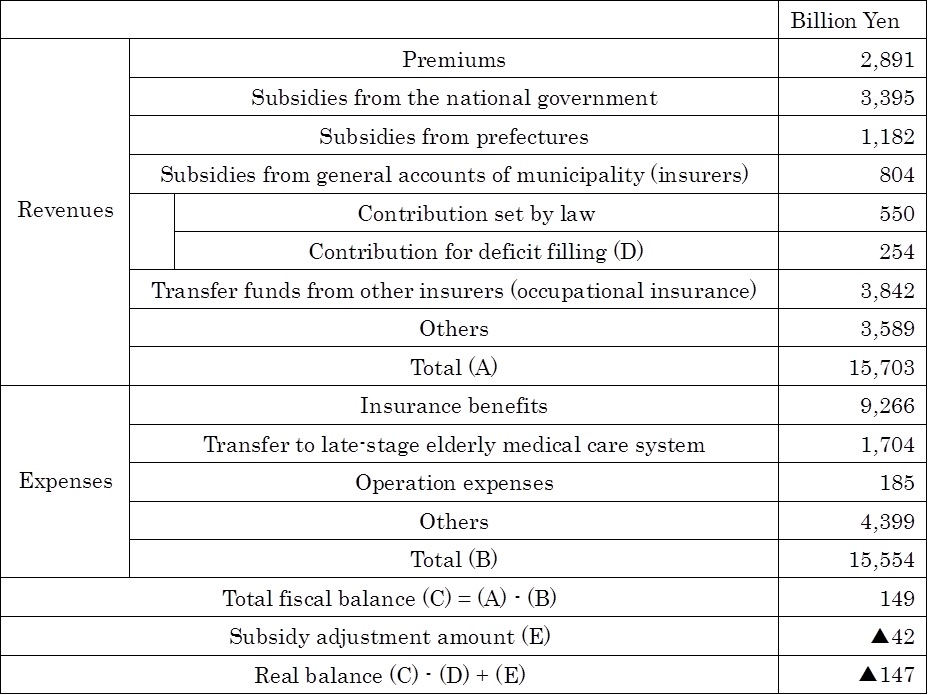Column Finance and the Social Security System 2018.05.10
【Aging, safety net and fiscal crisis in Japan】No.102: Fiscal Balance of the National Health Insurance
In March 2018, the Ministry of Health, Labour and Welfare released a report on the National Health Insurance Fiscal Balance of 2016. As explained in Column No.19, National Health Insurance is a mandatory requirement for all citizens aged 74 years or younger who are not enrolled in workplace insurance. As shown in Figure 1, the number of subscribers continues to decline from 35,490,000 in 2010 to 30,130,000 in 2016. This is because the number of people moving to the latter-stage elderly medical care system at aged 75 years is greater than the number of new subscribers.
In the past, the National Health Insurance insurers were municipalities, most of which were vulnerable to fiscal finances due to the small number of subscribers. Therefore, the government has taken a measure to transform the insurers from 1,716 municipalities (Table 1) to 47 prefectures since April 2018.
The total fiscal balance of the National Health Insurance has improved from a deficit of 57 billion yen in 2015 to a surplus of 149 billion yen in 2016. However, as shown in Table 2, in addition to 550 billion yen which is a subsidy set by law, municipalities were forced to contribute with 254 billion yen which is not obliged by law. The real balance reflecting this additional adjustment of burden and subsidy was 147 billion yen deficit.
Figure 1: Number of people insured by the National Health Insurance

Source: Ministry of Health, Labour and Welfare
Table 1: Overall picture of the fiscal situation of the National Health Insurance

Source: Ministry of Health, Labour and Welfare
Table 2: Balance structure of the National Health Insurance in 2016

Source: Ministry of Health, Labour and Welfare
